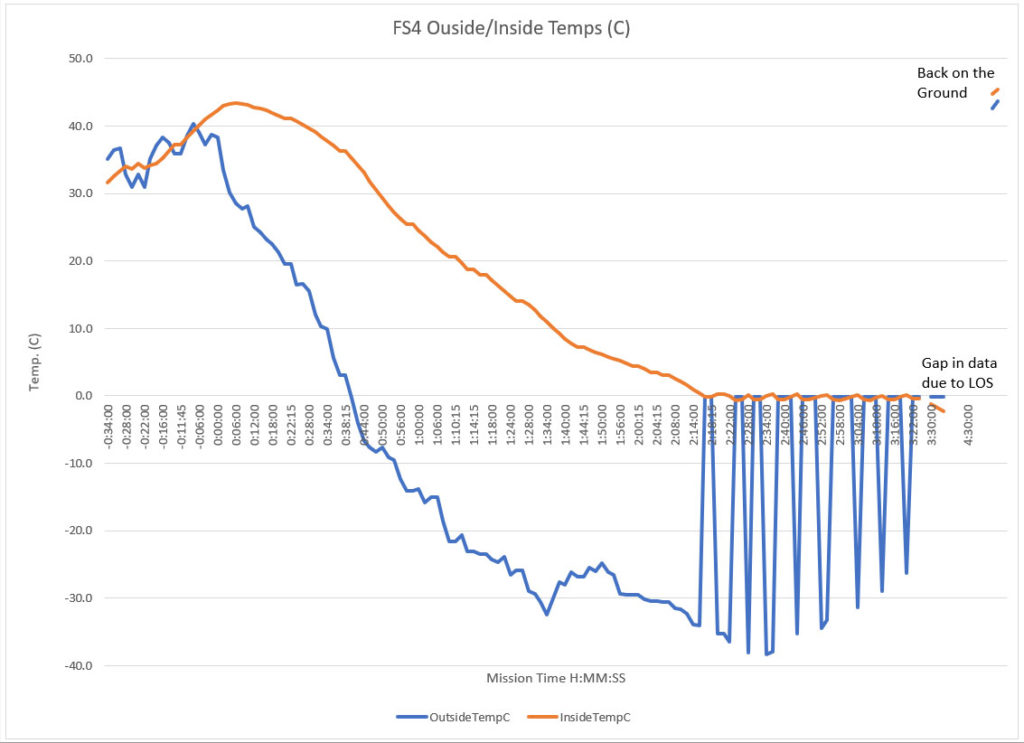The Heat is On! – Keeping cozy while flying in Styrofoam class.

One of the goals of the Flying Squirrel #4 (FS4) mission was to stay warm. Prior Flying Squirrel flights either froze to death or appeared likely to do so had another failure not terminated the flight early. For FS4, our Squirrel carried it’s own personal heating blanket to keep warm in the sub-zero temperatures.
With temperatures as low as -38C (-36F) at high altitude, the question was: can the heater and a 1.75” thick layer of foam insulation be enough to keep the Squirrel Payload above -10C, the point at which the LiPo battery would start to lose its ability to produce enough current to run the electronics (and heater).
The Arduino flight controller monitored the inside temperature and was set to start turning on heat at 0 Degrees C (i.e. freezing). Once turned on the heater only runs for about 50 seconds in the odd minute of the hour time slot between telemetry transmissions that occur in the even minutes. Would this be enough time to keep warm?
The graph above shows this was more than enough time to warm the Squirrel payload. In fact, once the heater was switched on, the temperatures quickly returned to above 0C in the first cycle and then heat was not switched back on for the next few cycles because the temp remained above 0C.
The load on the battery during heat cycles appears to have caused problems for the outside temperature probe. Although this is a problem, it displays on the graph, when the heater was on and off. When the heat was on, the outside temp erroneously spiked back up to -0.1 C. In future missions this can be avoided by scheduling the outside temp measurement well after the heater is turned off.
The orange line is the inside temperature of the payload vs the mission time. The “clock” started at T-34 minutes and you can see the inside temperature increase before launch as the hatch was sealed and heat began to build up inside. The outside temperatures (Blue line) also warmed up in the late morning sun. Once FS4 launched, the outside temperatures fell immediately as altitude quickly increased. A few minutes later the inside temperature started to respond to the outside environment. The delay in response is due to the insulation as heat requires time to flow through the insulation layer.
Two hours and 15 minutes into flight the inside temperature reached 0C and the heat was switched on. (And the outside temp error showed up as a spike in temp.) For the rest of the mission the inside temp stayed close to the 0C line as the heater was switched on and off.
The FS4 flight demonstrated that the heater works at high altitude temperatures. On future flights, with solar cells, the battery should be able to be charged in the daylight hours and then have enough power to run the heater though the night. This will enable multi day missions.
Details of the heater design will be shown in the FS4 schematic that will be published soon.
73s de Don KJ6FO
